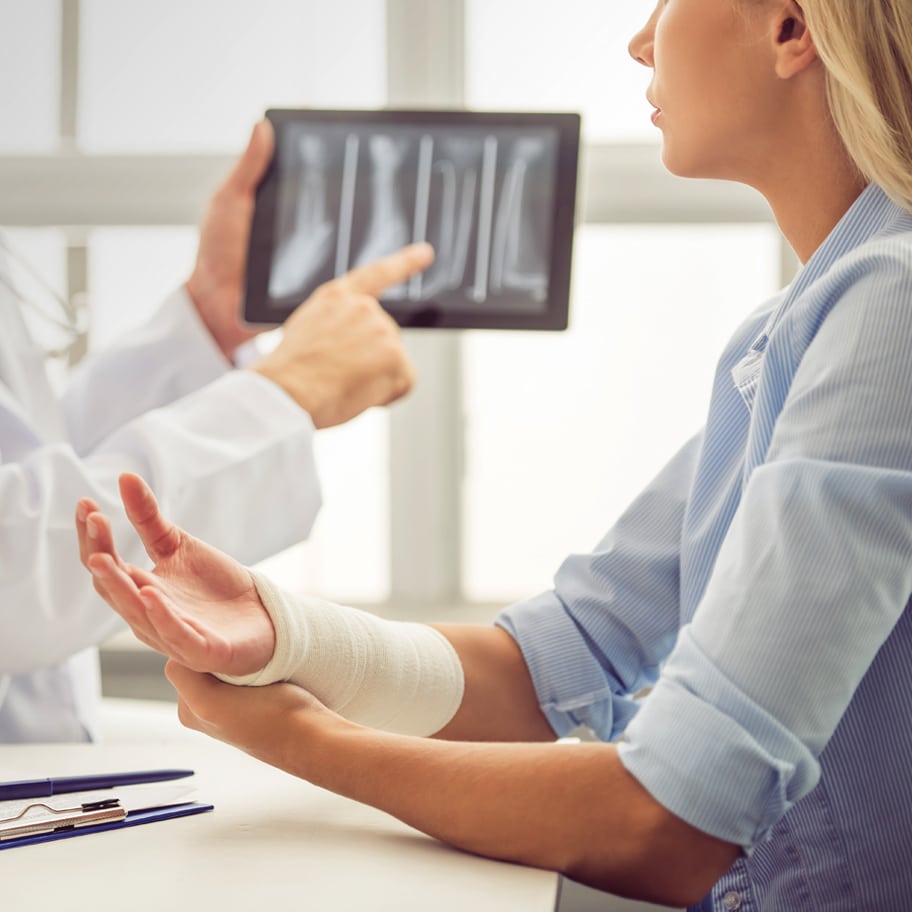Common Arm Injuries
The arm is the area from the shoulder down to the wrist and injuries range in severity and can affect the upper arm, elbow, wrist and forearm. Arm injury claims are usually made for injuries such as repetitive strain, crush injuries, fractures or tendon injuries.
Arm injury claims can come from any type of accident, from accidents at work to car accidents and accidents in public places. In order to have a successful claim, you must be able to prove that you did not contribute to your injuries. It must be proven that another party acted in a negligent manner which in turn led to the injuries. Not all arm injuries are caused as a result of an accident and may be caused by accidents at work or overuse.
Some of the most common arm injuries are:
- Breaks and Fractures
- Dislocations and Sprains
- Bicep Tendonitis
- Torn Muscles
- Amputations
- Crushing Injuries
- Loss of Function
- Soft Tissue Damage
- Hand Arm Vibration Syndrome
- Burns and Lacerations
- Nerve Damage
- Carpal Tunnel Syndrome
Arm Injury at Work*
Arm injuries at work can be caused by a number of different types of accidents. The industry and environment that a person works may play a role in the type of accident they have. Some work environments, such as construction, may be more susceptible to accidents and injuries when compared to somebody who works in an office. Having said that both do have their own set of risks that may affect a person’s arm. The most common types of arm injuries at work are:
Arm Injury in a Car Accident*
There is a multitude of possible injuries associated with a car accident and most people will immediately think whiplash when it comes to road accident injuries. The arm is also at risk from certain injuries, particularly in cases of a side collision and the most common of these are:
- Humerus Fracture (Crack or break in the upper arm) – this can occur when the arm takes the full force of the impact, for example when holding the steering wheel. In some cases, the end of the Humerus bone may suffer a fracture which can cause damage to the joint and cartilage which can lead to stiffness, pain and in some cases arthritis.
- Ulna or Radius Fracture (Crack or break of both bones in the forearm) – this can occur when the arm is outstretched during the accident.
- Olecranon Fracture (tip of the elbow) – this bone can become fractured or even dislocated during a car accident.
Arm Injury in a Public Place*
The most common accidents in public places are slips, trips and falls and are usually caused by the negligence of another party. There are many different types of injuries a person can sustain from a fall and in cases where a person injures their arm in a trip and fall accident the following are the most common of injuries:
- Shoulder injuries – the shoulder can take a large proportion of the impact in a slip and fall incident, which could lead to fractures, breaks, dislocations and long-term recuperation to regain normal shoulder function.
- Elbow Injuries – with little time to brace yourself for impact in falling on your elbow can lead to breaks, fractures and in turn join or cartilage issues
- Wrist injuries – in cases where a person falls and uses their hands to break their fall the impact the wrist takes can cause breaks, fractures and sprains.

